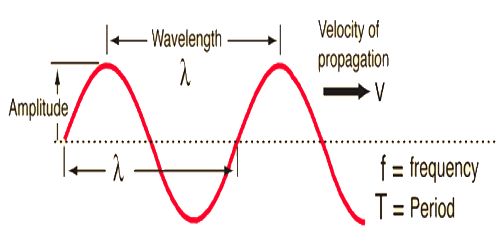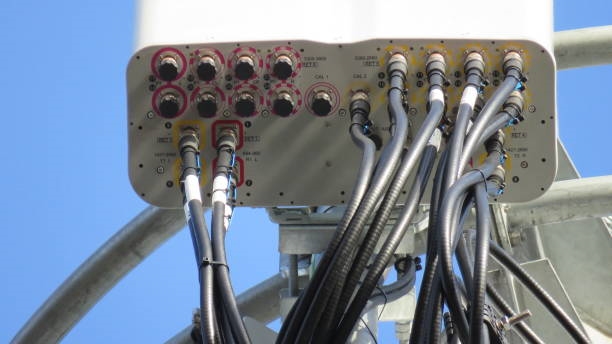Frequency
Frequency is the number of repetitions of a complete wave within a fixed time. It is the inverse of the period and its unit is the hertz (Hz), named after the German physicist Heinrich Rudolf Hertz. For example, if a waveform completes 10 cycles in one second, its frequency is 10 Hz. An electromagnetic wave with a frequency of 1 GHz completes 109 cycles per second.
Common Frequency Units
- 1 kilohertz (kHz = 103 Hz) = 1,000 Hz
- 1 megahertz (MHz = 106 Hz) = 1,000,000 Hz
- 1 gigahertz (GHz = 109 Hz) = 1,000,000,000 Hz
- 1 terahertz (THz = 1012 Hz) = 1,000,000,000,000 Hz
- 1 petahertz (PHz = 1015 Hz) = 1,000,000,000,000,000 Hz
- 1 exahertz (EHz = 1018 Hz) = 1,000,000,000,000,000,000 Hz
Wavelength
Wavelength is the distance between two adjacent wave peaks or troughs, i.e., the distance a wave travels in one period. It is denoted by the symbol λ (lambda). Wavelength units include millimeter (mm), centimeter (cm), meter (m), and kilometer (km).
Relation Between Frequency, Wavelength, and Velocity
For a traveling wave, frequency, wavelength, and propagation velocity are related. Note that identical frequency does not imply identical wavelength, because the wave velocity can differ in different media. For example, the frequency of an electromagnetic wave remains the same when it enters a different medium, but its wavelength changes due to the change in propagation speed. The speed of light, c = 299,792,458 meters per second, usually refers to the speed in vacuum.
Practical Use in RF Design
Converting between wavelength and frequency is commonly used in RF design, for tasks such as quickly estimating the resonant frequency of a short transmission line or determining the required length of a resonator at a given frequency.
 ALLPCB
ALLPCB








